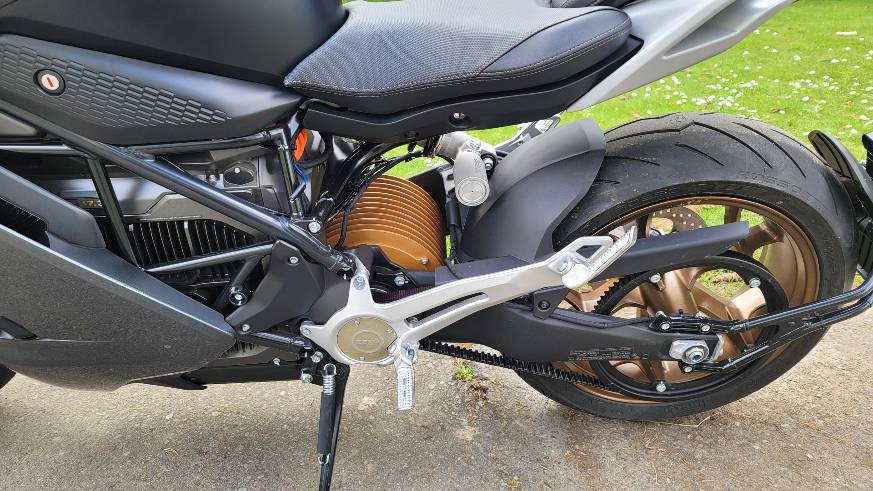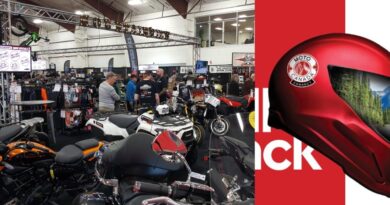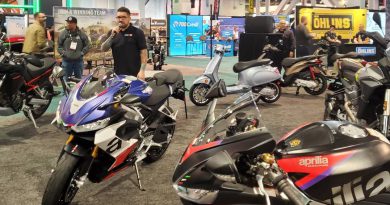Ready for an Electric Sport Tourer?
With all the attention on EVs, this seems like a good time to ask if sport tourers can look forward to a low carbon riding option. Sadly, the short answer is “not yet”. But if not now, then when? What exactly is the state of electric motorcycle technology, rideability, and conveniences? More directly, when can we expect a true electric sport touring motorcycle?
Familiar Riding Experience
The buzz around electric motorcycles is enticing, drawing interest from novice and accomplished riders alike with promises of cheap fuel, crazy-fast acceleration, low or no maintenance (aside from brakes, tires, and maybe a drive belt), and an assortment of electronic wizardry that make riding easier than ever. But all those advantages are overshadowed by one fundamental problem – range and recharge time. More on that in a minute.
The experience riding an electric is a bit unnerving at first. Two distinguishing characteristics become apparent the moment one settles in the saddle. The familiar red start/stop switch above the right grip functions more like an on/off switch. Press it and the engine engages. There’s no sound or vibration. But at that moment the throttle becomes fully active and with a simple twist of the wrist you’re off. Which raises the second trait common to electric motorcycles – the clutch lever and shifter are both missing and unneeded. These two important differences discourage engine revving at stop lights, but otherwise everything else about riding an electric moto feels familiar.
With that as a backdrop, let’s take a closer look at the prospect of an electric sport touring motorcycle.
Three Major Players
In the US, three major electric motorcycle makers merit consideration – LiveWire, Lightning, and Zero. Each delivers a true sportbike built on modern motorcycle technology, designed to extract maximum performance from a state-of-the-art electric power train. For this article we focused on the 2023 SR/S from Zero Motorcycle as it represents a good example of the closest thing to sport touring available today. To be clear, the SR/S is not a sport touring bike. It’s best described as a sportbike for commuters. Nevertheless, the SR/S provides a good reference point from which to understand the state of the industry.
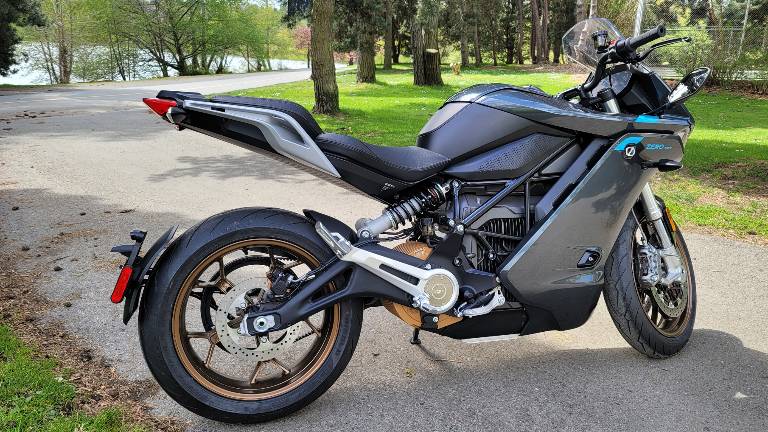
Why Zero and not one of the other three? The answer comes down to experience. Time in market. Zero has a surprising 17 plus years of experience pioneering electric motorcycle technology. Early Zero Motorcycles, like most first generation products, were rough and raised concerns about build quality. The team took that customer feedback into product development and continued to evolve in concert with advances in EV technology and motorcycling more broadly. The hard work paid off. Zero motorcycles compare favorably with industry standards and the company has established a strong dealer network. All of this is not to say Zero is better than the rest; we’re not ready to make that statement just yet. For now, our interest is in getting a sense of when we can expect an electric sport touring motorcycle.
Before Switching to Electric
Sport touring riders need to look at three things when considering an electric bike. First, range – how far can the bike travel on a single charge? Second, power and rideability – does the bike deliver enough for spirited sport touring? And finally, rider conveniences – are there extras to make long days easier on the mind and body. Let’s consider each using the SR/S as an example.
Range & Recharge Time
The achilles heel of electric motorcycles (and cars for that matter) is their limited riding distance and long recharging time. Electric motorcycles are compatible with the same Level-1 and Level-2 public charging infrastructure as their four-wheel cousins. Level 2 is the most common charging station and much faster than a Level 1 station. Newer DC Fast Charging stations are faster still, but still relatively scarce. For reference, an SR/S takes 2 hours to reach 95% on a Level 2 charger and about 10 hours on a Level 1. DC fast chargers can reduce comparable recharge time to less than 30 minutes.
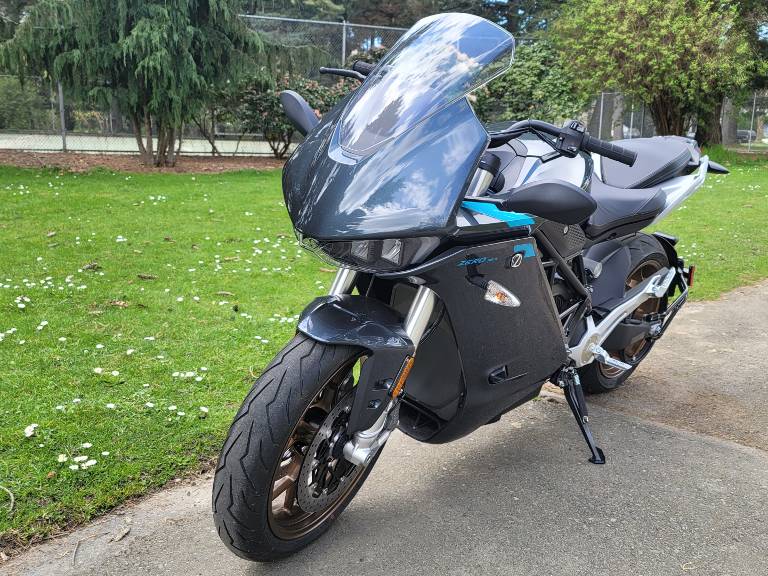
Now consider riding range. Every statement made about how far an EV can go on a full charge is at best a guess. Range fluctuates dramatically depending on road conditions and riding style. Riding fast, weaving through heavy stop and go traffic, and even choice of electronic riding mode each have a significant impact on range. For the sake of discussion, assume an average rider on an SR/S equipped with a baseline battery (i.e. no range extending battery) who covers a mix of highway and city roads. That rider can expect to lay down 124 miles before running out of juice. Clearly that’s not enough for a sport touring ride and becomes even more untenable when considering previously mentioned charging times. Even a small group of riders would spend a disproportionate amount of the day waiting around a charging station.
Rideability
What about rideability? Can an electric bike with no gears and no clutch be as much fun through twisties as a traditional sport tourer? As it turns out, and to our surprise, yes it can. Carving canyons on an electric is as much fun as the same on a comparable gas-powered sportbike. Consider the numbers. The SR/S is a mid-level performer among electrics, generating 110 HP at 5600RPM and capable of 0 to 60 in 2 seconds. Not enough? An LS-218 from Lightning Motorcycles has a claimed 200 horsepower; (Lightning model numbers represent top speed, in this case 218 MPH). Lastly, don’t get caught-up in the clutch and shifting thing – after a few short miles the urge to shift somehow fades away.
Acceleration is near-instant and power pours on relentlessly. The sensation is a bit surreal – calmly exciting. Only blurring landscapes and the rush of wind make it real. When it’s time to slow for a corner, simply relax the throttle and the bike gracefully decelerates. For parking lot maneuvers, the kind that normally require feathering throttle and clutch, riders instead rely on throttle and rear brake. Metering engine power to the rear wheel is so directly controllable that the absence of a clutch takes almost no time to get comfortable with. In terms of rideability, electrics offer riding excitement equal to a traditional bike, and in terms of acceleration even more.
Comfort and Convenience
That leaves us with rider convenience. Sport touring rides cover hundreds of miles each day, day after day, so any suitable electric motorcycle must have all the comforts that make those miles both joyful and safe. Here again electrics have what’s needed. Consider these key touring features found on the Zero SR/S. Start with a menu of preferences and ride settings displayed on the bright full color (but not touch) instrument panel accessed from a toggle switch on the left grip. From here riders select a ride mode to match road conditions and their mood. Choices include eco mode (maximum riding range but a top speed limited to 70 MPH), street, sport mode (highest level of performance and lowest range), and rain. If none of this fits the situation, riders can configure their own custom mode. The bike comes with ABS brakes and traction control, as well as heated grips. Thinking ahead, there’s no reason manufacturers can’t add cruise control, electronic suspension, navigation, phone integration, and more rider instrumentation (e.g. an accelerometer).

Electric Sport Touring Is Coming
With all that said, what’s next for the sport touring rider who wants to lower his or her carbon footprint? These are early days. Based on how manufacturers are investing, as evidenced by product announcements, sportbikes and adventure bikes will come first. A true electric sport touring motorcycle is unlikely to appear in the market for at least a couple years. On a bright note, the pace of innovation leaves little doubt that eventually a capable fully electric sport touring motorcycle is certainly in the cards.
In the meantime, motorcycle makers and battery suppliers continue to work together to squeeze more power in a package suitable for today’s larger sport touring bikes. But that alone is not enough to get the job done. At the same time, the country needs a vastly expanded network of fast charging stations that make it possible for a group of riders to charge-up in no more time than they spend at a gas station today.
And finally, it goes without saying that motorcycle manufacturers have to bring everything they know about the demands of sport touring to the design and development of an electric that feels like a real step up from today’s gas-powered machines.

by John DeVitis, Editor and Publisher
John DeVitis, Editor & Publisher of American Sport Touring, has been riding and writing about all things motorcycling for decades, with a special focus on sport touring motorcycles. He possesses an uncanny knack for discovering little-known roads in picturesque locations across the United States and Canada, turning riding adventures into stories that inspire readers to explore. These experiences, both on the road and in digital publishing, including years at MSNBC.com—have shaped strong editorial principles and a clear vision, assuring readers of high-quality content they can trust.
Did we hit the mark?
Tap thumps up or thumbs down to send your comments to the editor.
Your feedback helps improve American Sport Touring. We do not use your information for any other purpose.
Please read our Privacy Policy.

